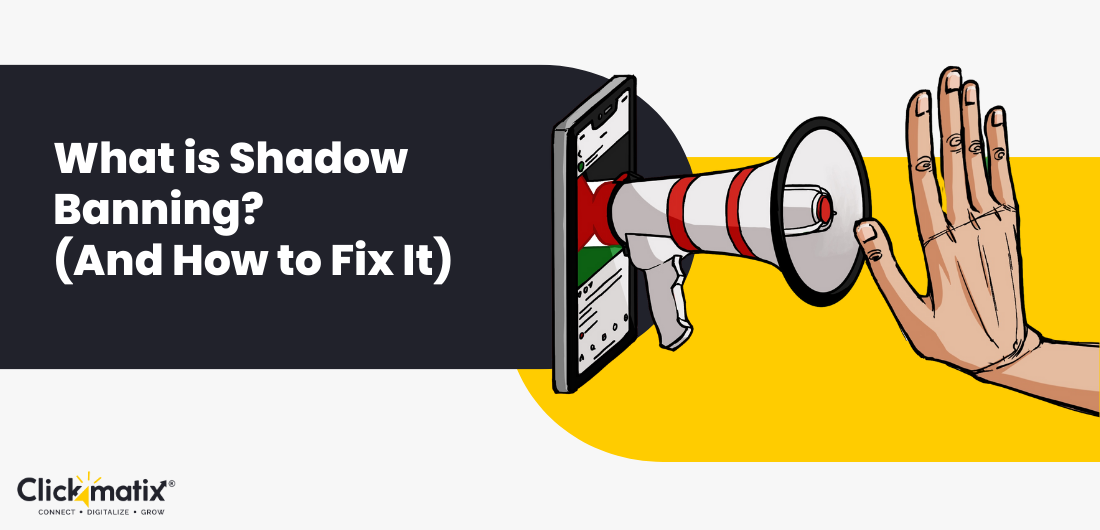
Imagine investing hours into creating the perfect social media post—only for it to vanish into a black hole of zero likes, comments, or shares. Your once-thriving engagement drops to zero, and your followers can’t seem to find your content. This experience could be the result of a practice called shadow banning.
So, what is shadow banning? It’s a controversial and often frustrating phenomenon that affects users across platforms like Instagram, TikTok, Twitter, and beyond. Unlike outright bans, shadow banning is subtle and operates without the user’s knowledge, making it one of the most confusing and debated practices in the social media world.
Whether you’re a content creator, influencer, business owner, or social media manager, shadow banning can undermine your social media strategy overnight, costing you visibility, followers, and even revenue. This blog will explore shadow banning, why it happens, how to tell if you’re affected, and, most importantly, how to fix and prevent it.
What is Shadow Banning?
Shadow banning limits or reduces a user’s content visibility without notifying them. Your posts may no longer appear in search results or under hashtags, but the platform doesn’t provide any alerts or direct indications that something is wrong. As a result, your engagement could drop significantly, even though you’re posting as usual.
The term “shadow ban” first gained attention in the early days of online forums, where moderators would “shadow” ban users by hiding their posts from others while letting the user believe they were still visible. Today, the phenomenon has extended to social media platforms like Instagram, Twitter, and TikTok.
Let’s put some numbers on the impact. According to Neil Patel, shadow banning can cause up to a 90% drop in engagement. Imagine if you had 10,000 followers actively engaging with your posts, but suddenly, only 1,000 of them see your content. That’s the invisible effect of a shadow ban—users continue posting, thinking they are reaching their full audience when in reality, their visibility is severely restricted.
Common Platforms Where Shadow Banning Occurs
While the concept of shadow banning is prevalent across several platforms, it is most commonly reported on:
- Instagram: The infamous “Instagram shadowban” affects users who violate platform guidelines, overuse certain hashtags, or engage in what is deemed spammy behaviour.
- Twitter: The “Twitter shadowban” is widely speculated to reduce the reach of users who share controversial or sensitive topics.
- TikTok: The “TikTok shadow ban” has affected countless creators, especially when their content is flagged as inappropriate or violates community guidelines.
In each of these cases, users report sudden and inexplicable drops in engagement, reduced visibility in hashtags, and decreased follower interactions—classic signs of a shadow ban.
How to Tell if You’ve Been Shadow Banned
Unlike a full ban, shadow banning operates in stealth mode. You won’t get a notification or warning from the platform. Instead, the signs are subtle, and you might not even notice it at first. But here’s how you can detect a shadow ban:
1. Drastic Drop in Engagement:
If your likes, comments, and shares suddenly plummet without explanation, shadow banning may be the culprit. A 90% drop in engagement, as reported by Neil Patel, is not uncommon. If you’ve been consistently getting hundreds of likes, and now your posts are barely scraping double digits, something’s off.
2. Content Not Appearing in Hashtags or Search Results:
You might use hashtags to increase the discoverability of your posts, but if your content no longer appears under those hashtags or in search results, it’s a red flag. Try searching for your posts using a different account to confirm.
3. Followers Can’t Find Your Posts or Profile:
Another common indicator is when followers say they can’t find your content, or worse, that they can’t even find your profile in search.
How to Test if You’re Shadow Banned
- Use a Different Account: The easiest way to check is by searching for your posts using a different account. If your content doesn’t show up under hashtags or in search results, you might be shadowbanned.
- Monitor Engagement with Analytics Tools: Use tools like Instagram Insights, TikTok Analytics, or Twitter Analytics to track your engagement rates. A sharp and sudden decline is a strong indicator.
Why Does Shadow Banning Happen?
Shadow banning doesn’t just happen out of the blue—there’s usually a reason behind it, even if the platform doesn’t tell you what it is. Platforms use shadow banning as a way to quietly enforce their community guidelines. This reduces the visibility of accounts that violate their policies without taking more drastic measures, like account suspension.
Here are the most common reasons why you might be shadow-banned:
1. Violation of Platform Guidelines:
Platforms like Instagram, Twitter, and TikTok have detailed guidelines that users are expected to follow. Posting content that is offensive, inappropriate, or deemed harmful can lead to shadow banning. According to Neil Patel, content that violates community standards, even unintentionally, is a primary triggerTikTok for shadow bans.
2. Overuse of Hashtags:
Hashtags can help your content reach new audiences efficiently. However, overusing or using banned or broken hashtags can lead to shadow banning. Instagram, for example, penalises accounts that excessively use the same set of hashtags on multiple posts or use banned hashtags.
3. Spamming Behavior:
Posting too frequently, using automation tools, or engaging in spammy behaviour (like liking and commenting excessively in a short period) can make platforms flag your account as a bot. Neil Patel emphasises that platforms are designed to reward authentic, organic engagement, and they penalise anything that looks automated.
4. Misinformation or Flagged Content:

Get weekly insights for revenue-shifting results
Sign up for our newsletter and be the first one to know about our exclusive offers, digital marketing news and updates.
|
|
Thank you for Signing Up |


Content flagged as misinformation or violating content standards is another reason for shadow banning. As platforms crack down on fake news, users who inadvertently share flagged content may see a reduction in visibility.
5. Algorithm Changes:
Sometimes, it’s not something you did but rather changes in the platform’s algorithm. Twitter and Instagram often update their algorithms, which can unintentionally affect visibility. As algorithms evolve to prioritise different types of content, certain accounts might temporarily lose traction.
How to Fix Shadow Banning
Now that we’ve identified why shadow banning happens, let’s focus on how to fix it. If you suspect you’ve been shadow-banned, don’t panic. Here’s a step-by-step guide to help you recover your account:
1. Review Platform Guidelines:
Go through the platform’s community guidelines and ensure your content complies with them. If any of your past posts violate the rules, consider deleting them. For instance, TikTok’s guidelines are notoriously strict, especially around sensitive content or misinformation.
2. Reduce Hashtag Usage:
Avoid using the same set of hashtags repeatedly. Instead, mix them up and ensure that none of your hashtags are banned. Use tools like Hashtagify to discover trending, safe-to-use hashtags.
3. Take a Break from Posting:
Sometimes, shadow banning is the platform’s way of signalling that you need to cool down. Take a break from posting for a few days to allow the algorithm to reset. During this time, engage with your followers authentically, and avoid posting any new content.
4. Appeal to the Platform:
If you’re confident that the shadow ban is a mistake, reach out to the platform’s support team. Instagram, Twitter, and TikTok all have help sections where you can submit a support ticket. While there’s no guarantee you’ll get a response, it’s worth trying.
5. Switch Up Your Content Strategy:
Platforms reward fresh, engaging content. If you’ve been posting the same type of content over and over, consider diversifying your strategy. Try incorporating different formats like videos, carousels, or stories to re-engage your audience.
6. Be Patient:
Recovering from shadow banning can take time. According to Neil Patel, the average shadow ban can last between 14 to 30 days, but it can vary depending on the platform and the severity of the violation.
How to Prevent Shadow Banning in the Future
Once you’ve recovered from a shadow ban, the key is to avoid falling into the same trap again.
Here are some best practices for staying on the platform’s good side:
1. Stay Updated on Platform Policies:
Platforms frequently update their community guidelines. Make it a habit to check for updates so that you can adjust your content strategy accordingly.
2. Use Hashtags Sparingly:
While hashtags can help increase visibility, using too many can backfire. Stick to a few relevant, high-performing hashtags, and always ensure they aren’t on the platform’s banned list.
3. Engage Genuinely:
Automation tools and bots might seem like a fast track to growth, but they often lead to shadow banning. Platforms value authentic human interaction—so focus on building genuine relationships with your followers.
4. Review Content Regularly:
Keep an eye on what you post. Even if something seems harmless, it could violate the platform’s guidelines. Review your posts regularly to ensure compliance.
5. Diversify Your Content:
As algorithms evolve, certain types of content may become prioritised while others are deprioritised. To stay relevant, experiment with different types of content, such as videos, stories, or live streams.
Conclusion
Shadow banning is a frustrating experience that can derail your social media strategy if not handled properly. However, by understanding why shadow banning happens, how to detect it, and how to fix it, you can regain your lost visibility and engagement. More importantly, following best practices to prevent shadow-banning in the future will keep your social media presence thriving.
The key takeaway? Social media platforms prioritise authentic, engaging content. Stick to the rules, avoid spammy behaviour, and maintain a diversified content strategy to ensure your profile stays visible and relevant to your audience. By implementing these strategies, you can protect your account from the mysterious and damaging effects of shadow banning.
FAQs
How do you know if you are shadowbanned?
To identify if you've been shadowbanned, pay attention to these key signs:
1. Sudden Drop in Engagement: If you notice a sharp decline in likes, comments, and shares, it could be a sign of shadow banning. A 90% drop in engagement is typical for shadow-banned accounts.
2. Hashtag Visibility: If your posts stop appearing under the hashtags you use, even though you’re still using them correctly, this is a red flag. Try searching for your content using a different account to check if it’s visible under those tags.
3. Content Not Appearing in Search Results: If followers mention they can’t find your posts or your profile in search, your account might be shadowbanned.
4. Follower Interactions Decline: Fewer people may engage with your posts, and despite your consistent posting, your content might not appear in their feeds.
Using social media analytics tools like Instagram Insights, TikTok Analytics, or third-party tools can help you spot drastic drops in reach and engagement, which could signal a shadow ban.
How long do shadow bans last for?
Shadow bans are typically temporary but can last anywhere from 14 to 30 days, depending on the platform and the severity of the offence. The length of a shadow ban varies, and in some cases, it may lift earlier if you stop the actions that triggered it, such as the overuse of hashtags or spamming behaviour.
Instagram, for instance, can limit visibility for up to two weeks, while Twitter’s shadow ban period can be shorter, depending on the infraction. The key to shortening a shadow ban is to stop engaging in behaviours that might have caused it, such as posting inappropriate content, using banned hashtags, or engaging in excessive automation.
How do I stop Shadowban?
To stop or avoid being shadowbanned, follow these key strategies:
1. Review Platform Guidelines: Ensure your content follows the platform’s rules and community standards. Platforms like Instagram, TikTok, and Twitter have strict policies, and violating them can result in a shadow ban.
2. Limit Hashtag Usage: Avoid using banned or repetitive hashtags across multiple posts. Instead, rotate relevant hashtags and avoid overusing the same ones in every post.
3. Avoid Spamming Behavior: Do not use bots or automation tools for likes, follows, or comments, as platforms prioritise organic interaction.
4. Post High-Quality Content: Content flagged as inappropriate, misleading, or harmful can lead to a shadow ban. Stay within community guidelines to prevent this.
5. Engage Authentically: Genuine interactions are key. Excessive, automated engagement with other users' content may lead to your account being flagged.
By following these steps and allowing some time for the algorithm to reset, you can stop or prevent shadow banning.
What is the difference between banned and shadow banned?
The key difference between being banned and shadowbanned lies in visibility and notification:
1. Banned: When an account is fully banned, the platform completely restricts your access. You’re notified of the ban, and in most cases, you lose the ability to post, comment, or interact on the platform. A ban is a formal action, and the user is often given a reason (such as violating community standards or legal issues).
2. Shadow Banned: Shadow banning, on the other hand, is more subtle. Your account is still active, and you can post as usual, but your content's visibility is severely limited. Your posts may not show up under hashtags, in searches, or even in your followers’ feeds, but the platform does not notify you of this action. It’s a more discreet form of limiting a user’s reach without suspending their account entirely.
How to get unshadowbanned?
If you’ve been shadowbanned, here are the steps to recover:
1. Review and Remove Content Violations: Go through your posts and delete any content that may violate platform guidelines. This includes removing posts with inappropriate material, banned hashtags, or flagged content.
2. Take a Break from Posting: Sometimes, taking a break from posting for a few days helps reset your account. During this period, don’t post, like, or comment excessively.
3. Appeal to the Platform: Contact the platform’s support team to appeal the shadow ban. While a quick resolution is not guaranteed, this step shows the platform that you’re aware of the issue.
4. Engage Organically: Rebuild your engagement by interacting authentically with your audience. Avoid automated tools or bots, and stick to organic likes, comments, and shares.
5. Use Fresh Hashtags: Rotate your hashtags and avoid using banned or overused ones that may trigger the ban.
The key to getting un-shadowbanned is patience and compliance with platform guidelines. If you follow these steps, the shadow ban should lift after a few weeks.
Can you recover from a shadow ban?
Yes, you can recover from a shadow ban, though the timeline varies depending on the platform and the reason for the ban. Most shadow bans are temporary and will naturally lift after 14 to 30 days as long as you stop engaging in the behaviour that caused it.
To speed up recovery, make sure to:
1. Review and Adjust Your Content: Remove any posts that could have triggered the ban, such as those with inappropriate hashtags or content.
2. Engage Authentically: Focus on genuine interactions with your audience instead of relying on automation.
3. Avoid Spamming: Reduce your mass following, excessive liking, and commenting, which can be interpreted as spammy behaviour.
Following these steps should help you recover your account’s visibility and regain the engagement you lost during the shadow ban period.
In search for strategic sessions?
Let us understand your business thoroughly and help you
strategies your digital product.
It's time to call your business-
a brand!
Australian Owned Agency
Save Time and Money
Unbeatable Value
Where Work Gets Done
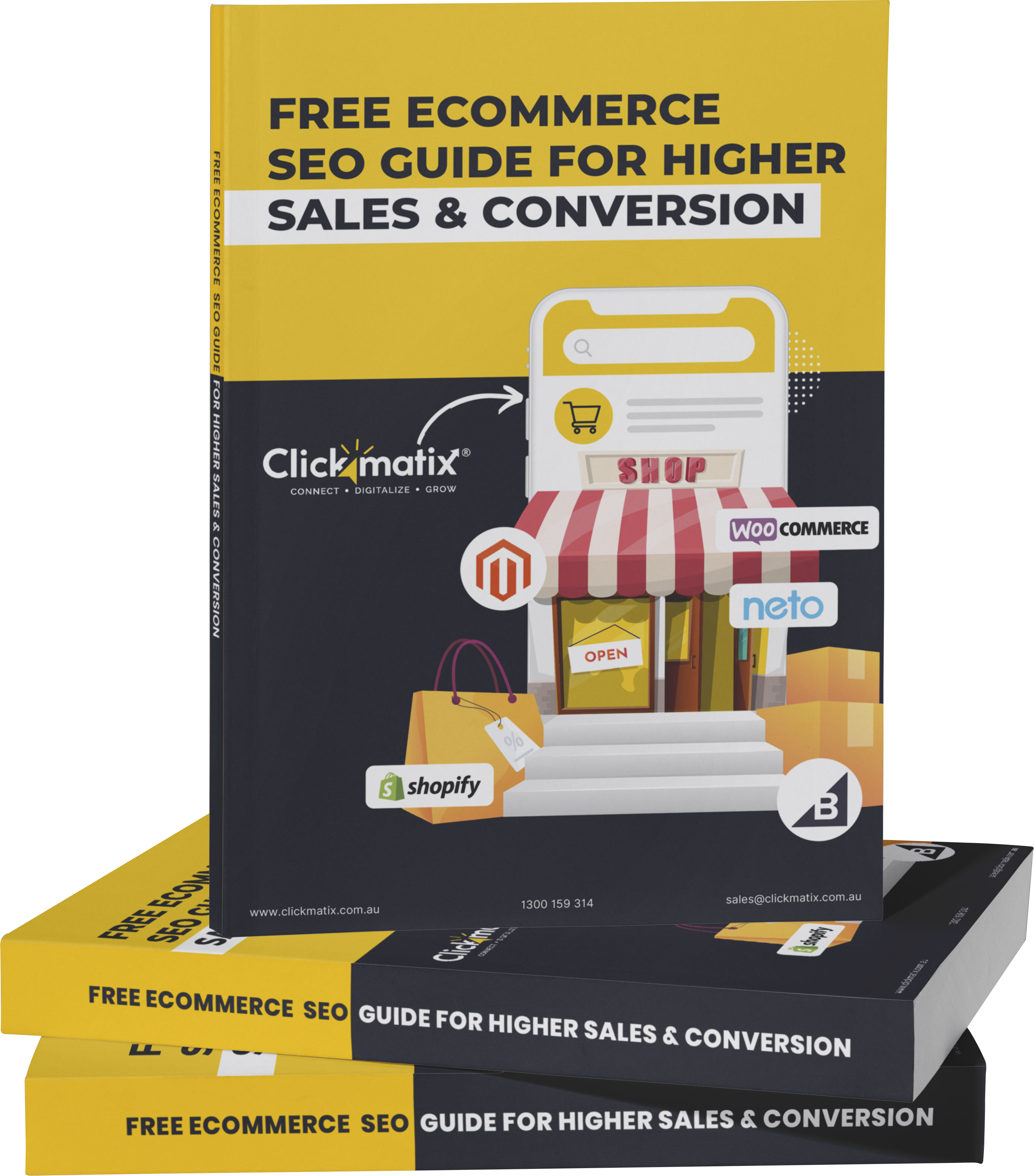
free Ecommerce SEO guide for Higher Sales & Conversion


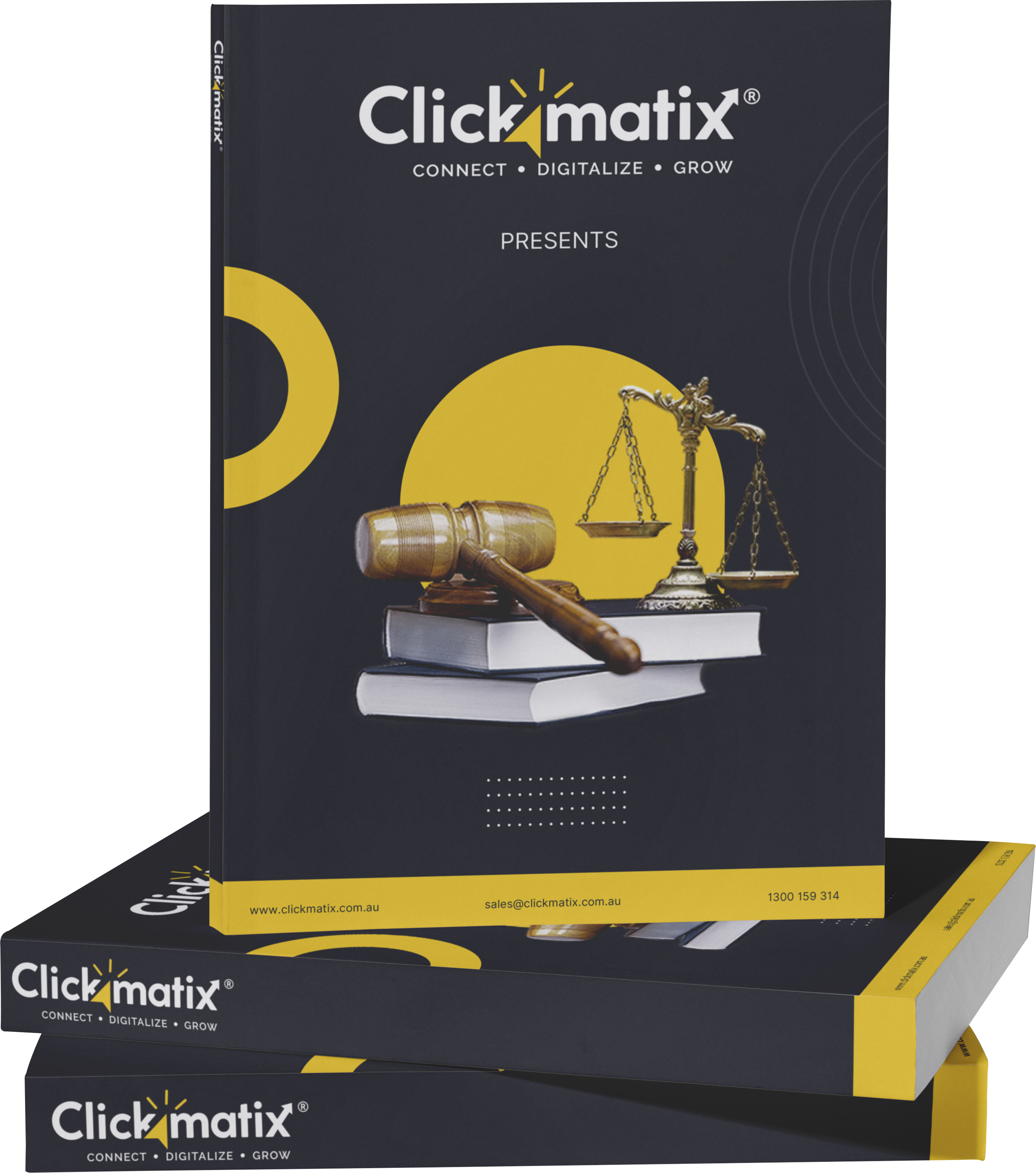
THE ULTIMATE MARKETING GUIDE FOR LAWYERS



Youtube Ads Guide How to Advertise on Youtube



free Ecommerce SEO guide for Higher Sales & Conversion


It's time to call your business-
a brand!
Australian Owned Agency
Save Time and Money
Unbeatable Value
Where Work Gets Done



The Game-Changing Ecommerce SEO Guide That Will Blow Your Mind & Sales
With this Ecommerce SEO Guide, you'll be able to:
- Develop a Ecommerce SEO strategy.
- Build a content marketing strategy that aligns with your business goals.
- Convert your website visitors into paying customers.



Youtube ads guide how to advertise on youtube
With this Youtube ads Guide, you'll be able to:
- Develop a Youtube ads strategy.
- Build a type of ads of your own that aligns with your business goals.
- Generate revenue from youtube ads.
It's time to call your business-
a brand!
Australian Owned Agency
Save Time and Money
Unbeatable Value
Where Work Gets Done









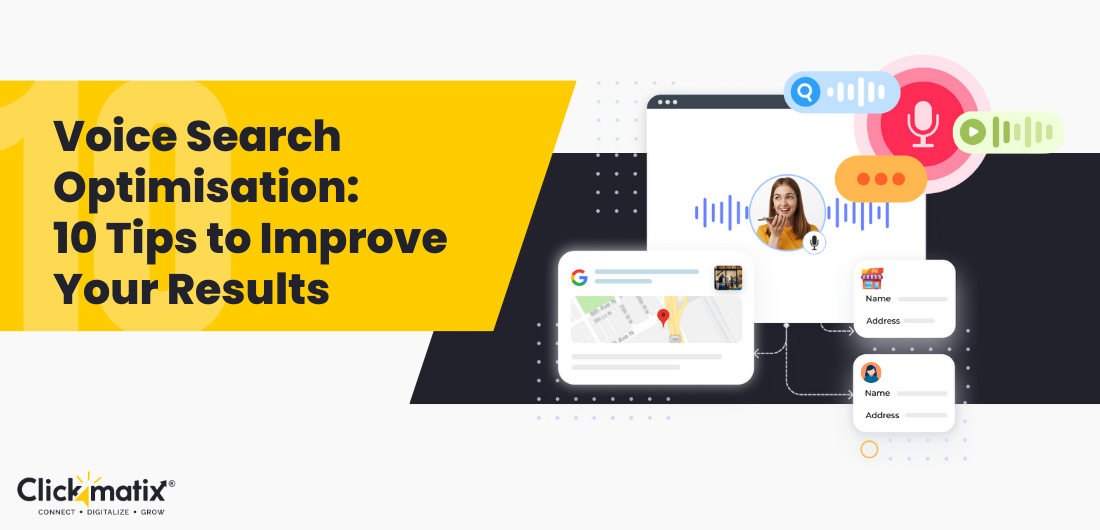

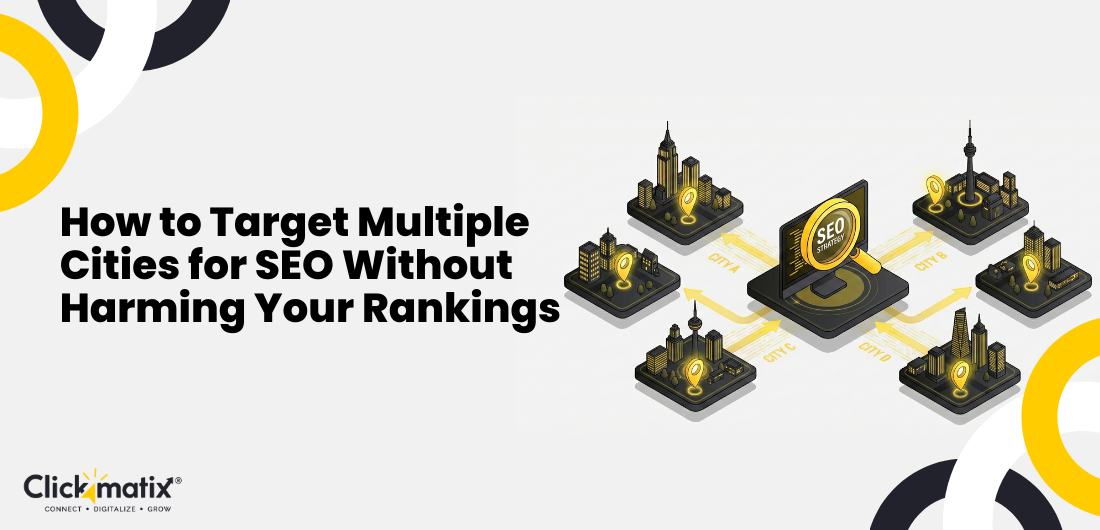

 Australian Owned Agency
Australian Owned Agency Save Time and Money
Save Time and Money Unbeatable Value
Unbeatable Value Where Work Gets Done
Where Work Gets Done